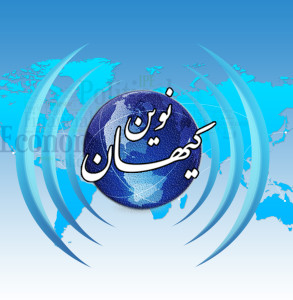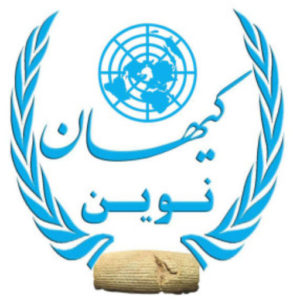در شرایطی که آمارهای مهم کشور در زمینه اقتصادی و اجتماعی سانسور میشوند، وزارت فرهنگ و ارشاد اسلامی آمارهایی از مراسم دهه اول ماه محرّم در کشور ارائه داده است. آمارهایی که به نظر میرسد بیشتر برای خنثی کردن رویارویی شهروندان با جمهوری اسلامی در روزهای عزاداری مذهبی است که در بسیاری از آنها هیأتها و حاضران به انتقاد از شرایط موجود و حمایت از جانباختگان میهن پرداختند. درستی این آمار البته مانند دیگر آمارهای ارائه شده از سوی جمهوری اسلامی با ابهام و تردید روبروست.
In a situation where the important statistics of the country are being censored in the economic and social fields, the Ministry of Culture and Islamic Guidance has presented statistics of the ceremonies of the first decade of the month of Muharram in the country. Statistics that seem to be more to neutralize the confrontation of the citizens with the Islamic Republic on the days of religious mourning, in many of which the delegations and those present criticized the existing conditions and supported the martyrs of the homeland. Of course, the correctness of this statistic, like other statistics provided by the Islamic Republic, is open to doubt.
کیهان نوین: وزیر ارشاد و فرهنگ اسلامی: «۸۱ درصد مردم ایران در ایام محرم سیاهپوش بوده و بالای ۶۰ درصد در هیاتها شرکت کردند و «۵۴ درصد مردم در ایام اول ماه محرم نذری دارند».
این ادعاها در حالیست که با پایان دهه محرّم تسویه حساب حکومت با هیأتها، مداحان و گروههای موسیقی که همسو با مردم و به یاد جانباختگان میهن در عزاداریهای مذهبی شرکت کردند آغاز شد.
مهمترین و ضروریترین آمارهای اقتصاد و اجتماعی کشور از سوی دولت سانسور و دستکاری میشوند تا میزان تخریب، سوء مدیریت و فاجعه در بخشهای مختلف پنهان بماند.
محمدمهدی اسماعیلی وزیر فرهنگ و ارشاد اسلامی جمهوری اسلامی با ارائه آماری از مراسم دهه نخست ماه محرّم در شهرهای مختلف ایران مدعی شده است که «۸۱ درصد مردم ایران در ایام محرم سیاه پوش بوده و بالای ۶۰ درصد در هیاتها شرکت کردند و «۵۴ درصد مردم در ایام اول ماه محرم نذری دارند».
وزیر فرهنگ و ارشاد اسلامی مبنای به دست آوردن آمار و اعداد از شهروندانی را که در «دهه محرّم» به خاطر امام سوم شیعیان سیاه پوشیدند و تعدادی که در هیأتها حضور یافته و نذری دادهاند، اعلام نکرده است.
او در ادامه گفته که «اینها را دشمنان بشنوند این واقعیت جامعه ایرانی است. مردم ما با تمام تفاوتها و سلایق زیر پرچم اباعبدالله حسین هستند.»
محمدمهدی اسماعیلی در ادامه ادعاهای تبلیغاتی خود گفته که «دشمن برای محرم امسال هم مأیوس و با بیخردی محرّم و عاشورا را محل زور آزمایی خود قرار داد اما مردم از تمام داشته و نداشته خود برای امام حسین مایه گذاشتند» و «امروز به برکت انقلاب و ولایت فقیه جامعه ما رو به جلو در حرکت است.»
محمد قمی رئیس سازمان تبلیغات اسلامی نیز بر اساس «دو افکارسنجی» که معلوم نیست کی و کجا و با چند نفر و توسط چه نهاد آزاد و مستقلی انجام شده، گفته است که «آمار حضور اقشار و سنین مختلف مردم ایران در محافل عزای سیدالشهدا در دهه اول محرم شگفتانگیز است!» وی سپس افزوده «خدا را سپاس میگوییم که این ملت امام حسین دهه محرمی ماندگار را به یادگار گذاشتند.»
این آمارها و ادعاها در حالی مطرح میشود که مردم در دهه نخست ماه محرّم تداوم رویایی خود با جمهوری اسلامی را با روشنی به نمایش گذاشتند. بسیاری از گروههای موسیقی مذهبی و مداحان با مردم و جانباختگان اعتراضات سال گذشته همراهی کردند و در اشعار خوانده شده در مراسم به مظالم جمهوری اسلامی پرداختند.
کیهان نوین پیشتر در گزارشی پیرامون «محرّم» امسال نوشته بود در آستانه اولین سالگرد خیزش ملّی در ایران، مراسم عزاداری ماه محرّم متفاوتتر از هر سال برگزار شد و تعداد هیأتها و دستههای زنجیرزنی که در اعتراض به حکومت نوحهخوانی کردند بطور چشمگیری افزایش پیدا کرد.
در ادامه آمده بود که شماری از مداحان با عباراتی صریح و تند رهبر جمهوری اسلامی و کل نظام را زیر سؤال برده و شمار زیادی از جوانان با ابتکارات نو و مدنی ارزشهای مکتبی حکومت را به چالش کشیدند. در مواردی حتا در بعضی هیأتها نمادهای مذهبی را آتش زدند. مقامات نظام، به ویژه ملایانی که بر مناصب و مسئولیتهای متفاوت تکیه زدهاند، نسبت به این شرایط هشدار دادند.
با پایان دهه محرّم نیز تسویه حساب حکومت با هیأتها، مداحان و گروههای موسیقی که همسو با مردم و به یاد جانباختگان میهن در عزاداریهای مذهبی شرکت کردند آغاز شد.
از سوی دیگر بارها درستی آمارهای ارائه شده از سوی جمهوری اسلامی مورد تردید و پرسش قرار گرفته و کارشناسان نهادهای ارائه دهنده آمار را به دستکاری آمار متهم میکنند.
از جمله «پایگاه دادههای باز ایران» هفته دوم امرداد در گزارشی آماری نشان داده که اعداد و ارقام ارائه شده درباره بازدیدهای صورت گرفته در اردوهای «راهیان نور» غیرمنطقی و به شدت اغراقآمیز است و از الگوهای یکسان عددسازی برای این آمار استفاده شده است.
بر اساس این گزارش آمارهای ارائه شده درباره بازدیدهای اردوهای «راهیان نور» در مقیاس آماری نه تنها غیرمنطقی و به شدت اغراقآمیز هستند، بلکه بر اساس الگوهای یکسان عددسازی شدهاند.
بنا بر دادههای ستاد مرکزی «راهیان نور» که در فاصله سالهای ۱۳۹۶ تا ۱۴۰۰ در سالنامه آماری مرکز آمار ایران منتشر شده، بیش از ۲۵/۵ میلیون نفر طی پنج سال، در کاروانهای بازدید از مناطق جنگی ایران و عراق شرکت کردهاند.
این آمارها نشان میدهد بیشترین آمار بازدیدکننده مربوط به سال ۱۳۹۷ با رکورد بازدید بیش از ۷ میلیون نفر و کمترین آمار مربوط به سال ۱۳۹۹ در کشاکش همهگیری کرونا است که طبق آمار ادعایی، در طول سال بیش از ۲ میلیون و ۶۱۶ هزار نفر در کاروانهای «راهیان نور» حضور داشتهاند.
همچنین ادعا میشود که در سال ۱۴۰۰ نیز با وجود محدودیتهای همهگیری کرونا، باز هم بیش از ۳ میلیون نفر در این مراسم شرکت کردهاند که بیشترین تعداد آنها از استانهای تهران، خراسان «رضوی»، فارس، اصفهان، مازندران و خوزستان بودهاند.
اینهمه در حالیست که مهمترین و ضروریترین آمارهای اقتصاد و اجتماعی کشور از سوی دولت سانسور و دستکاری میشوند تا میزان تخریب، سوءمدیریت و فاجعه در بخشهای مختلف پنهان بماند. کارشناسان اقتصادی بارها از سانسور آمارهای اقتصادی انتقاد کرده و آمارهای ارائه شده اقتصادی را بر خلاف واقعیت ارزیابی کردهاند.
از سال ۹۷ و با دستور مستقیم دولت روحانی بانک مرکزی انتشار عمومی آمارها و گزارشهای مربوط به تورم، رشد اقتصادی، جزئیات درآمد مالیاتی و قیمت هفتگی اقلام را متوقف کرد. در پاییز ۹۸ نیز بانک مرکزی از انتشار گزیده آمارهای اقتصادی با دستور دولت منع شد.
روزنامه «اعتماد» تیرماه امسال با رد ادعای مقامات دولتی درباره آمارهای اقتصادی از جمله تورم نوشت: «بر اساس علم آمار، اگر نرخ تورم ماهانه ۱/۵ درصد باشد نرخ تورم در پایان سال ۲۰ درصد و اگر نرخ تورم، ماهانه ۳ درصد شود، تورم آخر سال ۴۰ درصد خواهد بود. حال با توجه به نرخ ۱۲ درصدی تورم در خرداد و در صورت تداوم این روند در پایان سال ۱۴۰۱ نرخ تورم در ایران به ۱۶۰ درصد خواهد رسید.»
کامران ندری اقتصاددان معتقد است همواره کیفیت آمار منتشر شده و نظم انتشار، مورد بحث بوده است. این اقتصاددان درباره عدم هماهنگی آمارهای تورمی منتشر شده از سوی مرکز آمار ایران و بانک مرکزی نیز گفته که «در حال حاضر مرکز آمار ایران و بانک مرکزی، دو نهادی هستند که آمار تورم را منتشر میکنند. ما در گذشته دیدهایم که سیاستگذار در ایران تمایل دارد آماری را منتشر کند که با اهداف سیاسی او سازگاری بیشتری داشته باشد و عملکردش را در اقتصاد مثبتتر نشان دهد. سابقه تصمیمات سیاسی در کشور ما نشان میدهد که این ملاحظات نیز در انتشار آمار وجود دارد.»
خبرگزاری «ایلنا» به تازگی با انتشار گزارشی تحلیلی از «مهار تورم» با «عددسازی» نوشته بود که دولت بر خلاف قانون از محاسبه و انتشار منظم «خط فقر» خودداری میکند.
روزنامه بریتانیایی «فایننشال تایمز» نیز در رابطه با عدم انتشار آمار تورمی در ایران گزارش داد در شرایطی که بحران اقتصادی ایران عمیقتر شده، دولت ابراهیم رئیسی دادههای واقعی در خصوص میزان تورم و گرانیهای بیسابقه را پنهان میکند.
در این گزارش به نقل از سعید لیلاز تحلیلگر اقتصاد سیاسی آمده که مرکز ملی آمار ایران ظاهراً برای جلوگیری از اذعان به شکستن رکورد تاریخی نرخ تورم در دولت ابراهیم رئیسی از انتشار دادههای حقیقی منع شده است. او تأکید کرد که این دولت نتوانسته تورم را مهار کند.
مرتضی عزتی اقتصاددان نیز خردادماه امسال در روزنامه «تعادل» با اشاره به اینکه «دستکاری آمارهای اقتصادی توسط دولت مطرح شده که تحلیلگران را نگران کرده» اعلام کرد که «موضوع ارائه آمارهای شفاف در اقتصاد به اندازهای اهمیت دارد که میتواند سرنوشت کلی اقتصاد کشورها را تحتالشعاع قرار دهد.»
این اقتصاددان در ادامه تأکید کرد که «مردم و مسئولان و تحلیلگران میدانند که چه شرایط تورمی حاکم است؛ مردم هر روز راهی بازارها میشوند، گوشت و مرغ و تخممرغ و پنیر و… میخرند و میدانند. اقتصاددانها هم به واقعیات آماری آگاهی دارند و متوجهاند که نرخ تورم در اردیبهشت ماه ۱۴۰۲ به نسبت اردیبهشت ماه ۱۴۰۱ چه تغییری پیدا کرده است. دولت هم که از واقعیت با خبر است. باید از مسئولان پرسید این آمارها با چه هدفی تغییر پیدا میکنند؟»
در همین حال محمدرضا فرزین رئیسکل بانک مرکزی جمهوری اسلامی به تازگی گفته اینکه برخی آمارهای اقتصادی از جمله تورم که پیشتر از سوی بانک مرکزی هم منتشر میشد، دیگر منتشر نمیشود به دلیل منع قانون است. او افزوده عدم انتشار برخی آمارها به دلیل «ملاحظات امنیتی» است.
محمدرضا فرزین تأکید کرده هرچند هنوز اختلافهایی بر سر منبع انتشار آمارها مطرح است، اما به دلیل مسئله قانونی بودن آن، از انتشار آمار مربوط به تورم جلوگیری کردیم.
رئیس کل بانک مرکزی در بخشی از اظهارات خود به نگاه امنیتی در انتشار آمار و دخالت نهادهای امنیتی در انتشار آمار اشاره کرده و گفته است که «برخی از آمارهای اقتصادی هم ممکن است به دلیل محدودیتها و ملاحظات امنیتی ضروری نباشد که به صورت عمومی منتشر شوند.»
اینهمه در حالیست که در دسترس نبودن آمار، به عنوان یک عامل بسیار مهم، برنامهریزی و سیاستگذاری برای فعالان اقتصادی را دچار مشکل میکند و ریسک فعالیت و سرمایهگذاری اقتصادی را افزایش میدهد.
New Universe:
Minister of Guidance and Islamic Culture: “81% of Iranian people wore black during Muharram and more than 60% participated in delegations and “54% of people make vows during the first days of Muharram”.
– These claims started with the end of the Muharram decade, the settlement of the government’s accounts with the delegations, hymns and music groups that participated in religious mournings in harmony with the people and in memory of the martyrs of the country.
– The most important and necessary economic and social statistics of the country are censored and manipulated by the government so that the amount of destruction, mismanagement and disaster in different sectors is hidden.
Mohammad Mahdi Esmaili, the Minister of Culture and Islamic Guidance of the Islamic Republic, has presented statistics on the ceremonies of the first decade of the month of Muharram in different cities of Iran and claimed that “81% of Iranian people wore black during Muharram and more than 60% participated in the delegations and “54% of the people In the first days of the month of Muharram, they have a vow.”
The Minister of Culture and Islamic Guidance has not announced the basis for obtaining the statistics and numbers of the citizens who wore black during the “Decade of Muharram” for the sake of the third Imam of the Shiites and the number of those who attended the delegations and gave offerings.
He went on to say that “this is the reality of the Iranian society for the enemies to hear.” Our people, with all their differences and tastes, are under the banner of Aba Abdullah Hussein.
Mohammad Mehdi Esmaili continued his propaganda claims that “the enemy is desperate for Muharram this year and foolishly made Muharram and Ashura the place of his force, but the people, whether they had it or not, made a reason for Imam Hossein” and “today, thanks to the revolution and The legal guardianship of our society is moving forward.
Mohammad Qomi, the head of the Islamic Propaganda Organization, also said based on “two opinion polls” that were conducted by “two opinion polls” that are not known when and where and with how many people and by which free and independent organization, that “statistics of the presence of different classes and ages of Iranian people in the mourning circles of Seyyed al-Shahada in The first decade of Muharram is amazing! He then added, “We thank God that this nation of Imam Hossein remembered the lasting decade of Muharram.”
These statistics and claims are raised while the people clearly demonstrated their dream continuity with the Islamic Republic in the first decade of the month of Muharram. Many religious music groups and singers accompanied the people and victims of last year’s protests and addressed the atrocities of the Islamic Republic in the poems read in the ceremony.
In a report about “Muharram” earlier this year, Kehan novin had written that on the eve of the first anniversary of the national uprising in Iran, the mourning ceremony of the month of Muharram was held differently than every year, and the number of delegations and chain gangs who chanted laments in protest against the government increased significantly.
In the following, it was stated that a number of exponents questioned the leader of the Islamic Republic and the entire system with clear and sharp expressions, and a large number of young people challenged the school values of the government with new and civil initiatives. In some cases, they even burned religious symbols in some delegations. The authorities of the Nizam, especially the mullahs who have relied on different positions and responsibilities, warned against these conditions.
With the end of the Muharram decade, the settlement of accounts of the government began with the delegations, chanters and music groups who participated in religious mournings in harmony with the people and in memory of the martyrs of the country.
On the other hand, the correctness of the statistics presented by the Islamic Republic has been doubted and questioned many times and the experts accuse the institutions providing the statistics of manipulating the statistics.
Among other things, “Open Database of Iran” in the second week of Amradad in a statistical report showed that the numbers and figures presented about the visits made in “Rahian Noor” camps are illogical and highly exaggerated and the same numbering patterns were used for these statistics.
According to this report, the statistics presented about the visits of “Rahian Noor” camps are not only illogical and highly exaggerated on a statistical scale, but also based on the same patterns.
All this while the most important and necessary economic and social statistics of the country are being censored and manipulated by the government so that the amount of destruction, mismanagement and disaster in different sectors is hidden. Economic experts have repeatedly criticized the censorship of economic statistics and evaluated the presented economic statistics against reality.
Since 2017 and by the direct order of the Rouhani administration, the Central Bank has stopped publishing statistics and reports related to inflation, economic growth, details of tax income and weekly prices of items. In the fall of 2018, the central bank was prohibited from publishing economic statistics by order of the government.
In July of this year, “Etimad” newspaper rejected the claims of government officials about economic statistics, including inflation, and wrote: “According to the science of statistics, if the monthly inflation rate is 1.5%, the inflation rate will be 20% at the end of the year, and if the inflation rate is 3% per month Inflation at the end of the year will be 40%. Now, according to the 12% inflation rate in June and if this trend continues at the end of 1401, the inflation rate in Iran will reach 160%.”
Economist Kamran Nedri believes that the quality of published statistics and the order of publication have always been discussed. This economist also said about the lack of coordination of the inflation statistics published by the Statistics Center of Iran and the Central Bank that “Currently, the Statistics Center of Iran and the Central Bank are the two institutions that publish the inflation statistics. We have seen in the past that the politician in Iran tends to publish statistics that are more compatible with his political goals and show his performance in the economy more positively. The history of political decisions in our country shows that these considerations are also present in the publication of statistics.
“ILNA” news agency recently published an analytical report on “inflation control” with “numbering” and wrote that the government refuses to regularly calculate and publish the “poverty line” against the law.
The British newspaper “Financial Times” also reported regarding the non-publication of inflation statistics in Iran. In a situation where Iran’s economic crisis has deepened, the government of Ebrahim Raisi is hiding the real data regarding the rate of inflation and unprecedented high prices.
In this report, political economy analyst Saeed Lilaz is quoted as saying that Iran’s National Statistics Center has apparently been banned from publishing real data in order to avoid acknowledging the breaking of the historical record of the inflation rate in the government of Ebrahim Raisi. He emphasized that this government could not control inflation.
Economist Morteza Ezzati also stated in “Teza” newspaper in June of this year, pointing out that “manipulation of economic statistics by the government has been raised, which worries analysts” and that “the issue of providing transparent statistics in the economy is so important that it can affect the overall fate of the country’s economy.” to overshadow.”
This economist further emphasized that “people, officials and analysts know what inflationary conditions prevail; People go to the markets every day, they buy meat, chicken, eggs, cheese, etc. and they know. Economists are also aware of the statistical facts and have noticed how the inflation rate has changed in May 1402 compared to May 1401. The government is also aware of the reality. The authorities should be asked for what purpose these statistics are changed?”
Meanwhile, Mohammadreza Farzin, the head of the Central Bank of the Islamic Republic of Iran, recently said that some economic statistics, including inflation, which were previously published by the Central Bank, are no longer published due to the prohibition of the law. He added that the non-disclosure of some statistics is due to “security considerations”.
Mohammad Reza Farzin emphasized that although there are still disputes about the source of the statistics, we prevented the publication of the statistics related to inflation due to the issue of its legality.
In a part of his statement, the governor of the central bank mentioned the security perspective in the publication of statistics and the involvement of security institutions in the publication of statistics and said that “some economic statistics may not be necessary to be published publicly due to security restrictions and considerations.” ”
All this while the unavailability of statistics, as a very important factor, makes planning and policy making difficult for economic actors and increases the risk of economic activity and investment.













